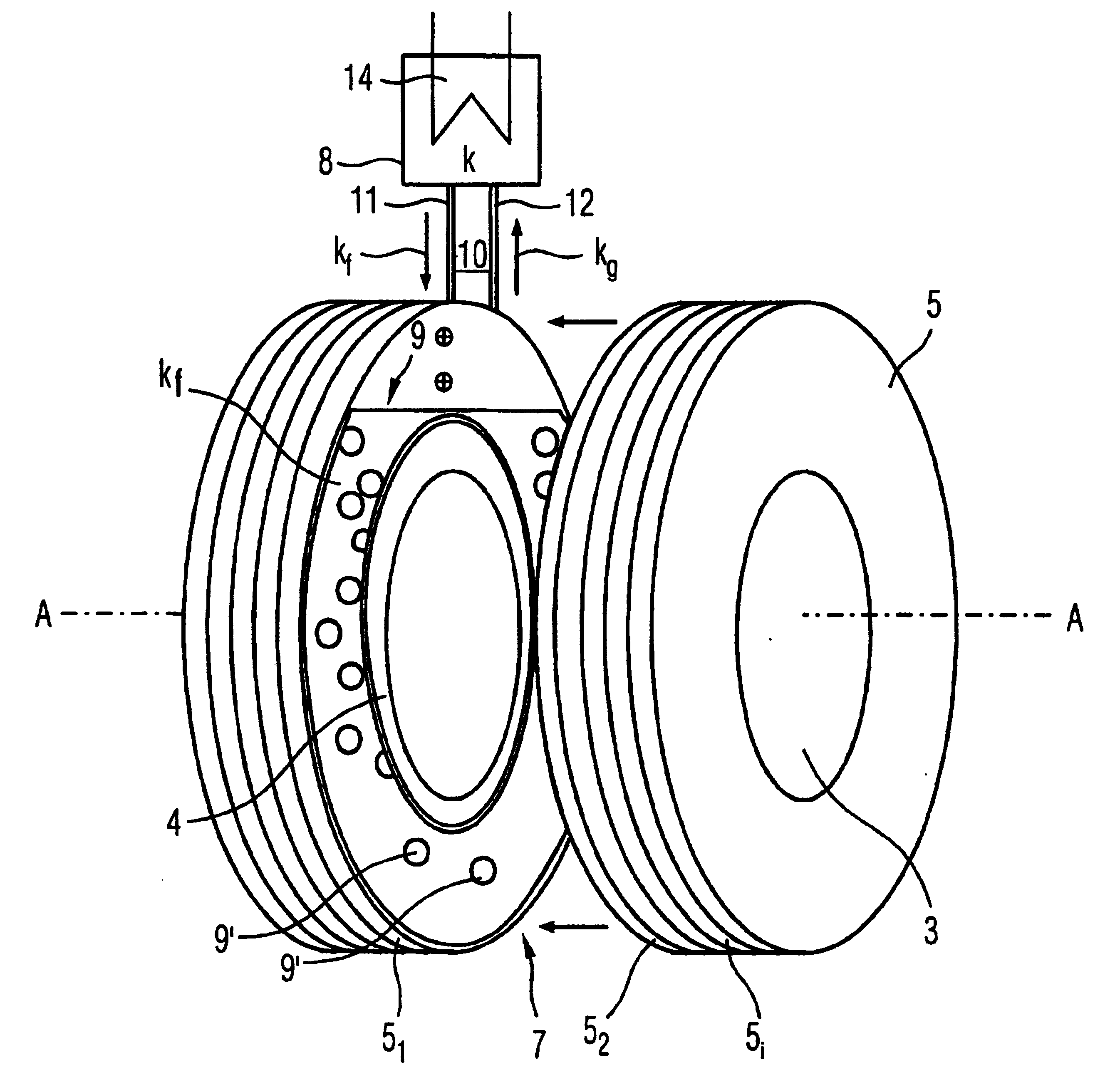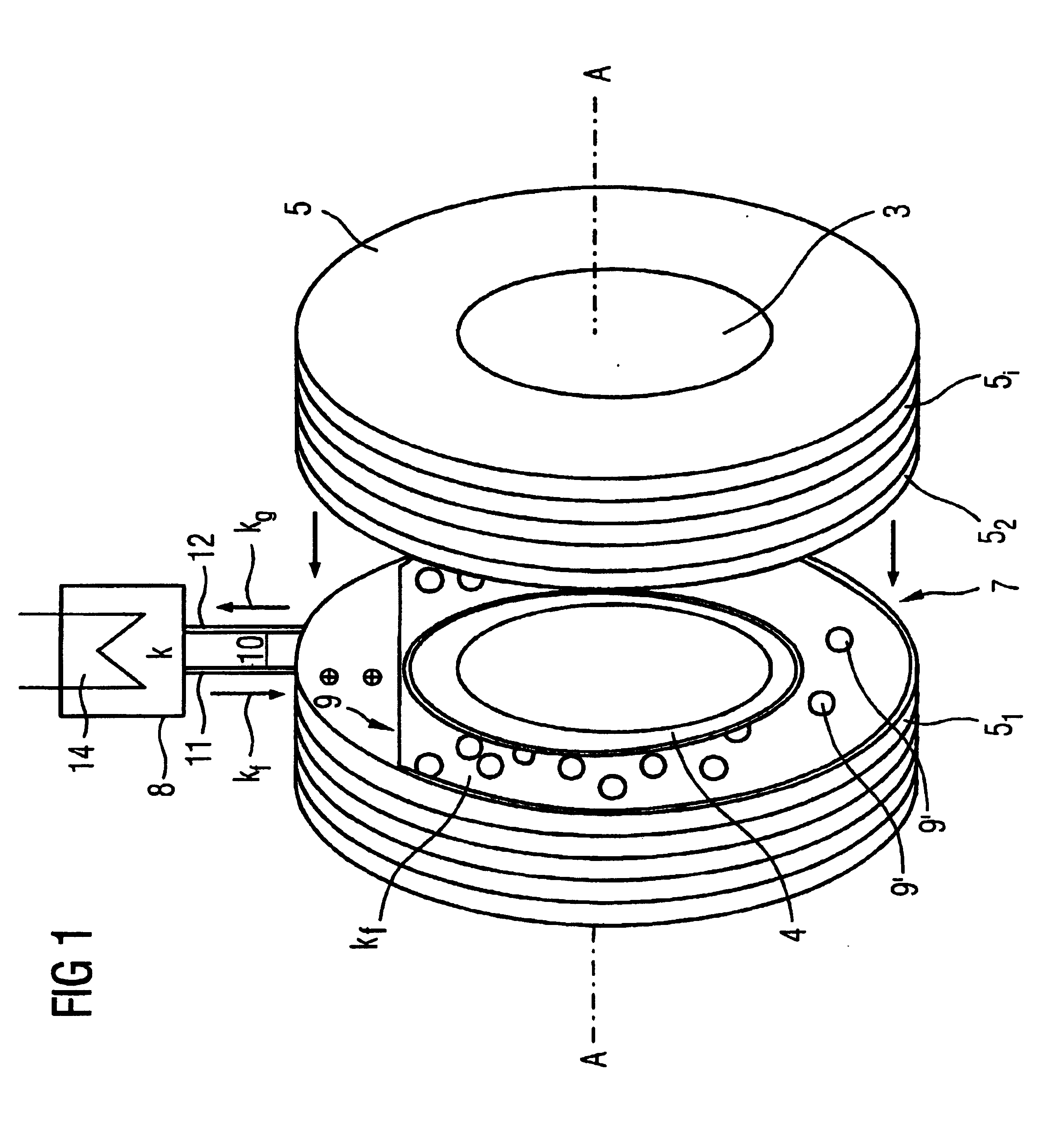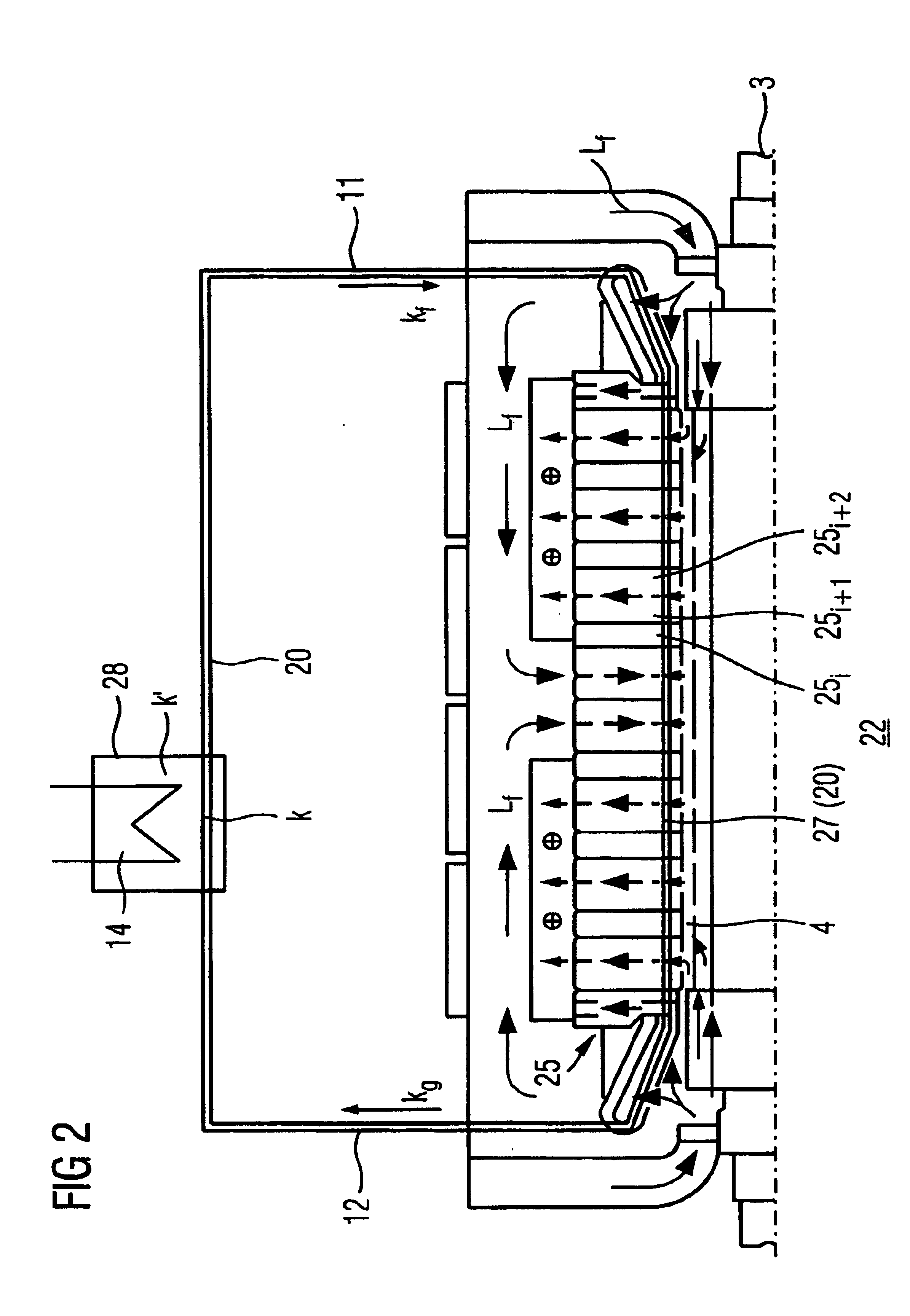Electric motor comprising a stator cooling unit
a technology of electric motor and cooling unit, which is applied in the direction of dynamo-electric machines, lighting and heating apparatus, supports/enclosements/casings, etc., can solve the problems of air flow itself contributing to undesirable heat production to a considerable extent, and not only are complex sealing measures required, but also extensive safety measures to be taken into account. , to achieve the effect of reducing complexity
- Summary
- Abstract
- Description
- Claims
- Application Information
AI Technical Summary
Benefits of technology
Problems solved by technology
Method used
Image
Examples
Embodiment Construction
[0032] Reference will now be made in detail to the preferred embodiments of the present invention, examples of which are illustrated in the accompanying drawings, wherein like reference numerals refer to like elements throughout.
[0033] The electrical machine according to the invention is based on machines which are known per se in the higher power range, such as generators. Parts which are not illustrated are generally known. Only those parts of the machines which are significant to the invention are shown in the figures.
[0034] According to FIG. 1, the machine 2 has a cooled or uncooled rotor 3, which is mounted such that it can rotate about an axis A. The rotor is at least partially surrounded by a stator 5 while maintaining an intermediate space 4 with an annular cross section, of which stator 5 in FIG. 1 illustrates only individual laminates 5i of a laminated core. A coolant area 7 in the form of a disk is formed between two of these laminates 51 and 52, which are in the form o...
PUM
 Login to View More
Login to View More Abstract
Description
Claims
Application Information
 Login to View More
Login to View More - R&D Engineer
- R&D Manager
- IP Professional
- Industry Leading Data Capabilities
- Powerful AI technology
- Patent DNA Extraction
Browse by: Latest US Patents, China's latest patents, Technical Efficacy Thesaurus, Application Domain, Technology Topic, Popular Technical Reports.
© 2024 PatSnap. All rights reserved.Legal|Privacy policy|Modern Slavery Act Transparency Statement|Sitemap|About US| Contact US: help@patsnap.com










